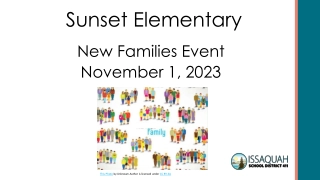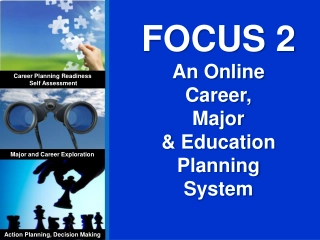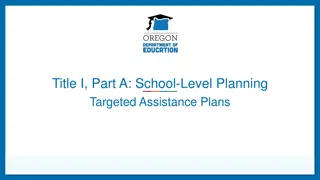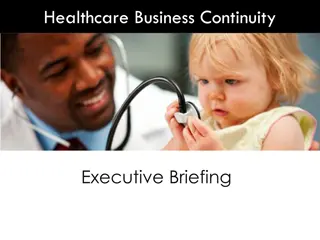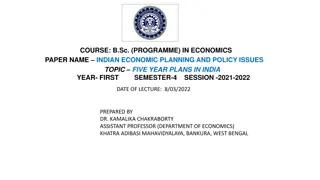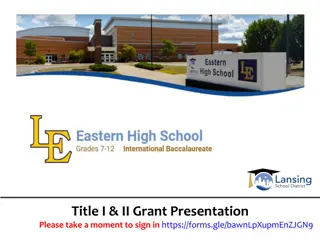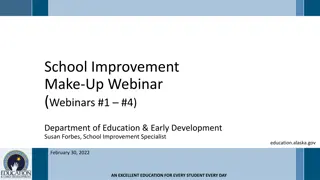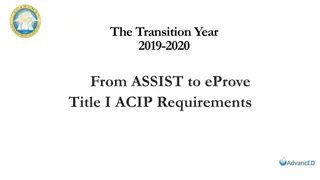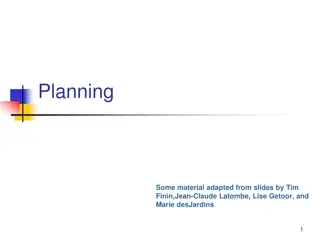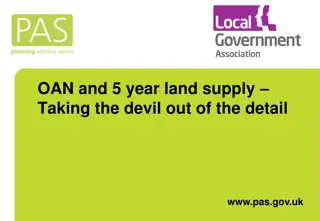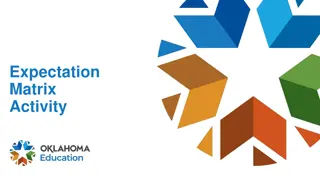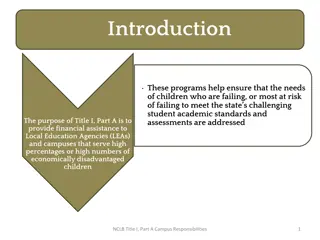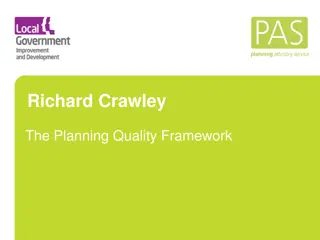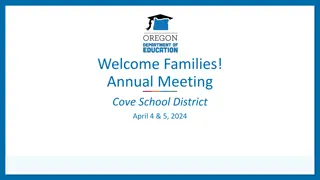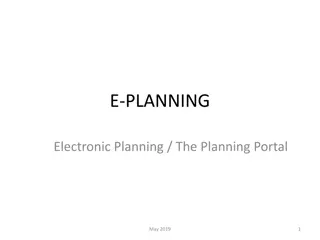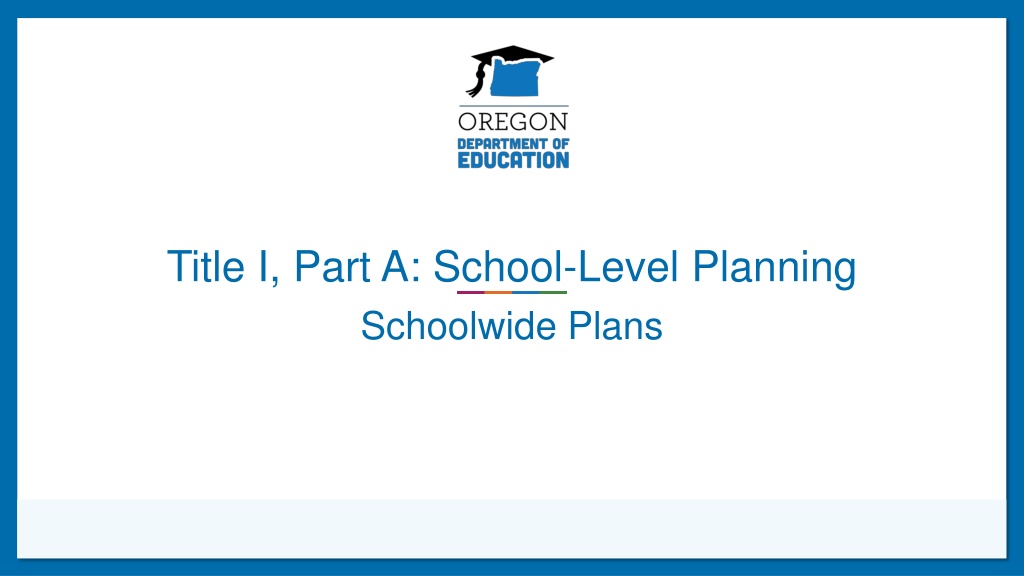
Understanding Title I, Part A School-Level Planning and Schoolwide Programs
Explore the differences between Targeted Assistance and Schoolwide Programs under Title I, Part A, which aim to provide all students with equitable and high-quality education. Learn about eligibility criteria, resources allocation, professional development opportunities, and the importance of family engagement in school planning. Discover the benefits of Schoolwide Programs in fostering a comprehensive learning environment for students and teachers.
Download Presentation

Please find below an Image/Link to download the presentation.
The content on the website is provided AS IS for your information and personal use only. It may not be sold, licensed, or shared on other websites without obtaining consent from the author. Download presentation by click this link. If you encounter any issues during the download, it is possible that the publisher has removed the file from their server.
E N D
Presentation Transcript
Title I, Part A: School-Level Planning Schoolwide Plans
Todays Agenda Targeted Assistance vs. Schoolwide Programs Digging Deeper into Schoolwide Plans Assessing Needs Identifying Goals, Activities and Measures Evaluating and Adjusting Engaging Families Oregon Department of Education
The purpose of Title I, Part A is a to provide all children significant opportunity to receive a fair, equitable, and high-quality education, and to close educational achievement gaps. Purpose of Title I-A Academic Intervention & Enrichment (all subjects) Social Emotional Learning and Support Professional Development Instructional Staff and Supports Behavioral Supports Oregon Department of Education
Targeted Assistance vs. Schoolwide Programs Category Targeted Assistance Schoolwide School Eligibility Any school with a poverty level of 35% or the district s poverty average (whichever is lower). Any school with a poverty level of at least 40%.* *A school with less than 40% poverty may request to conduct a schoolwide program. Student Participation Resources are directed to student meeting the establish targeting criteria. All student in the school have access to activities under a schoolwide plan. Professional Development Professional development with Title I funds focuses on staff that provide direct support to Title I students. Title I funds can be used to provide professional development for all staff. Planning & Evaluation Plan includes a general description of targeted assistance program activities to support students identified as eligible for services. The schoolwide plan must be developed for reforming the total instructional program in the school. Oregon Department of Education 4
Common Ground: TAS and SWP Both Targeted Assistance (TAS) and Schoolwide (SWP) plans must: be based on identified needs, include specific goals and strategies, and be developed and reviewed annually with the input of families. Schoolwide Program Brief Targeted Assistance Program Brief Oregon Department of Education 5
Schoolwide Programs Schoolwide plans allow for a broad array of initiatives throughout the school Push-in Flexible grouping Activities that build skills and assess progress More than reading and math interventions Social-Emotional Supports Multi Tiered Systems of Support Enrichment All students and teachers can benefit Oregon Department of Education 6
Schoolwide Plan Criteria Oregon Department of Education 7
Criteria & Continuous Improvement Criteria are organized under four categories Comprehensive Needs Assessment Goals, Activities and Measures Family Engagement Evaluation and Review Criteria for Title I-A Schoolwide Plans Oregon Department of Education 8
Assess School Needs Who are our students? What data did we look at? What is the story our data is telling? Who was at the table? Community Engagement Toolkit
Identify Goals, Activities and Measures Goals/Outcomes - What change are we hoping for? Activities/Strategies What are we going to do? Measures How will we know if what we are doing is working? Professional Learning How will we support staff?
Evaluate and Adjust Process to annually evaluate What did we say we were going to do? How are we doing? How do we know? What are we going to do next? Include voice of students, families and staff Revise as necessary Usually spring or summer
Family Engagement How are families involved in developing the plan and providing feedback? What steps do we take to remove barriers to participation by ALL families? How do we communicate about opportunities for family involvement in school activities? What are the strategies we use to help families support their student's learning? Oregon Department of Education 12
Resources Schoolwide Plan Criteria Schoolwide Planning Template ESSA Quick Reference Brief: Developing Schoolwide Plans ORIS Needs Assessment Tool for Schools Community Engagement Toolkit Tribal Consultation Toolkit Oregon Department of Education 13
Please reach out! Jen Engberg Jennifer.Engberg@ode.oregon.gov Sarah Martin Sarah.Martin@ode.oregon.gov Lisa Plumb Lisa.Plumb@ode.oregon.gov Amy Tidwell Amy.Tidwell@ode.oregon.gov Oregon Department of Education 14
Regional Contacts by ESD Amy Tidwell o Grant, Harney, High Desert, InterMountain, Jefferson, North Central and Region 18 Jen Engberg Clackamas, Columbia Gorge, Multnomah and Northwest Regional Lisa Plumb Lane, Linn Benton Lincoln and Willamette Sarah Martin Douglas, Lake, Malheur, South Coast and Southern Oregon Oregon Department of Education 15

